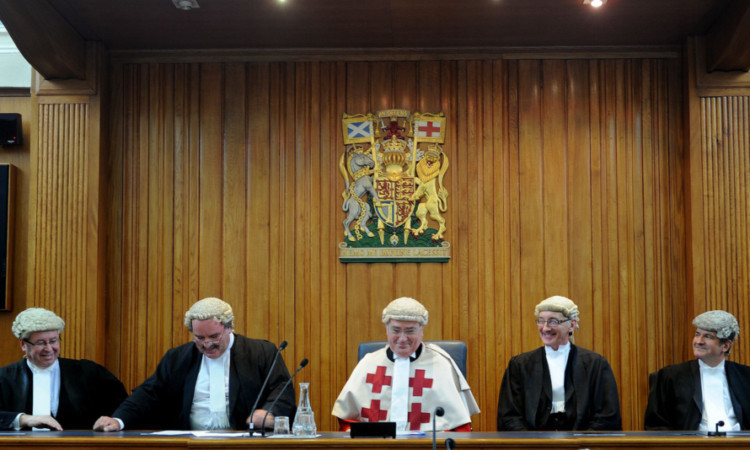The occupants of its dock have included Scotland’s most notorious serial killer and a man once suspected to have been Jack the Ripper.
But the present sitting of the High Court at Dundee will be its last after a recommendation earlier this year to remove it from the list of Scottish High Court “circuit” locations.
It means that high-profile High Court trials for those accused of the most serious crimes will no longer be held in court one of Dundee Sheriff Court.
The final sitting was marked by a presentation in the courtroom before Lord Kinclaven and four sitting Dundee sheriffs on Monday. Lord Kinclaven told an audience of around 50 people, including solicitors, depute fiscals and court staff, that his association with the High Court at Dundee went back more than 35 years.
He added: “Since 2005 I have been a frequent visitor to Dundee on the High Court bench and the place has been an important part of my career for several decades.”
Lord Kinclaven also thanked the Dundee community for providing jurors for the High Court, without which “we could not provide our service of criminal justice”.
Shortly before presenting Lord Kinclaven with a 1950s photograph of the court building, Sheriff Richard Davidson said the courtroom had seen “a number of remarkable trials”.
These included the 2008 trial of serial killer Peter Tobin for the murder of Vicky Hamilton and the 13-hour trial of Londoner William Bury, once thought to be a “possible candidate” for Jack the Ripper.
The present sitting of the High Court at Dundee, the fourth this year, will be its last.
Earlier this year the Scottish Court Service recommended that the High Court sits primarily in three dedicated centres in Edinburgh, Glasgow and Aberdeen, with only Greenock, Paisley, Dumbarton, Livingston and Dunfermline as circuit locations a move approved by Scottish ministers.
However, the Lord Justice General or the Lord Advocate can determine that the High Court be held in any other location, if they consider that to be in the interest of justice.
Alexander McGregor, author of The Law Killers which includes a number of murder trials held in Dundee said the court’s long history included a murder trial in the 1840s that later drew between 15,000 and 20,000 people to the accused’s subsequent execution outside the building.
“It used to be at the first day of the High Court at Dundee, the heralds would play the trumpets. There was an expression among the crooks in those days,‘It will be trumpets for you’, in reference to that,” he said.Fascinating historyDundee’s courtroom has witnessed some of the most high-profile murder trials in Scottish legal history.
Among them were:Notorious serial killer Peter Tobin was jailed for a minimum of 30 years in 2008 for the murder of schoolgirl Vicky Hamilton, who had disappeared 18 years previously. Tobin was told by a judge that he would die in jail after a jury took less than two-and-a-half hours to find him guilty. Crowds queued outside the court building to get seats in the public gallery for the 1988 trial of Andrew Hunter. Salvation Army member Hunter was found guilty of strangling his 30-year-old wife Lynda with a dog lead and jailed for life. William Henry Bury was hanged for the murder of his wife Ellen in 1889 and was the last person executed in Dundee. Bury’s previous home near Whitechapel in London and similarities between the crimes led to suggestions that he was Jack the Ripper. The Courier printed an editorial the day after his execution decrying the “judicial butcheries” of capital punishment. Father-of-17 Jamie Cumming was jailed for a minimum of 17 years in March this year after stabbing James Getty to death outside the Maltman pub on Mains Road, Dundee. This was the last Dundee murder trial to be held at the High Court at Dundee.
